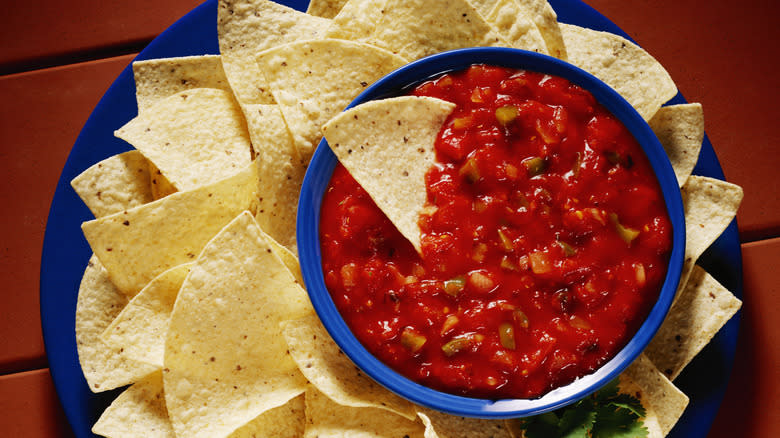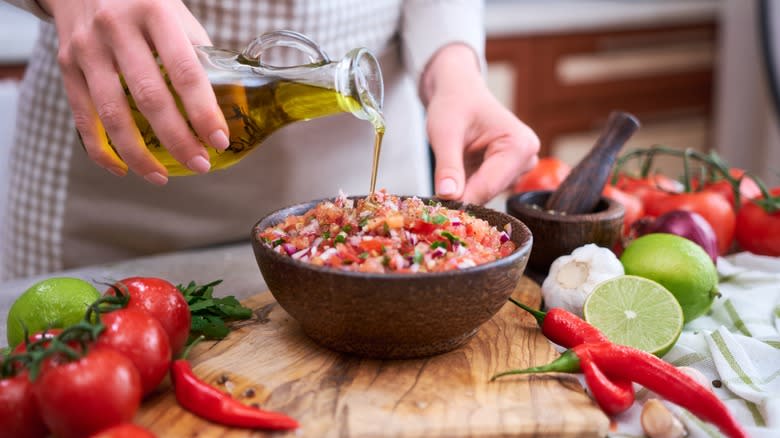Julia Holland
·3 min read
Eating out is both luxurious and convenient, leaving the cooking, cleaning, and serving to professionals. Not only are we paying for the service, but we're also paying for the culinary expertise and creativity of the chef and execution of the dishes. The term "restaurant-quality" connotes a high standard of preparation, presentation, and freshness. It's no wonder, then, that restaurant-quality salsa tastes better than the kind you pick up at the store, or even homemade attempts.
Unlike jarred or canned salsa, restaurant salsa is essentially small-batch, freshly made salsa. These establishments have access to high-quality ingredients and equipment to streamline the salsa-making process and ensure a consistent product. Restaurants have ingredients delivered fresh daily from highly specific purveyors, giving them access to the freshest and best quality of even the most obscure ingredients.
Recipe developers for restaurants have plenty of time to experiment with salsa recipes, testing them and perfecting them before they even reach the menu. Salsa recipes have specific spice and ingredient proportions executed in an almost formulaic manner. Furthermore, many Mexican restaurants are either owned by Mexican families or run by Mexican chefs who rely on both generational and cultural knowledge to create the most authentic salsas. That said, even Mexican families with their tried-and-true recipes may lack the fresh ingredients and high-tech equipment for restaurant quality salsa with the same consistent quality and precision.
ADVERTIsem*nT
Read more: The 15 Healthiest Chip Brands, Ranked From Worst To Best
How To Make Restaurant-Quality Upgrades To Salsa
Unless you have access to a commercial kitchen, specialty purveyors, and a tested, long-standing family recipe, you're already at a disadvantage. That said, there are plenty of tips to bring homemade or even your favorite jarred salsa brand up to restaurant-quality standards. The simplest tip is to use the freshest ingredients you can find from your local market or grocery store. Making the salsa from the ingredients the same day you buy them will further ensure restaurant-quality freshness. The same goes for spices and seasonings. Buying whole spices and fresh herbs will result in more vibrant flavors.
Of course, making the salsa to order and eating it fresh out of the blender with hot chips is as close as you'll get to the true restaurant experience. In some cases, letting the salsa sit overnight in the fridge gives it time to develop more complex flavors.To add complexity and fragrance to salsas, try charring or toasting your ingredients. Toasting spices before grinding them and adding them to fresh ingredients would amp up their aromas, translating to a more flavorful salsa. Charring tomatoes, onions, peppers, and garlic is a common practice in Mexican cooking done by placing whole veggies on a hot comal or griddle and turning them every so often. The result is a more complex profile of caramelized sweet flavors and a roasted, smoky taste.
Read the original article on Tasting Table.

